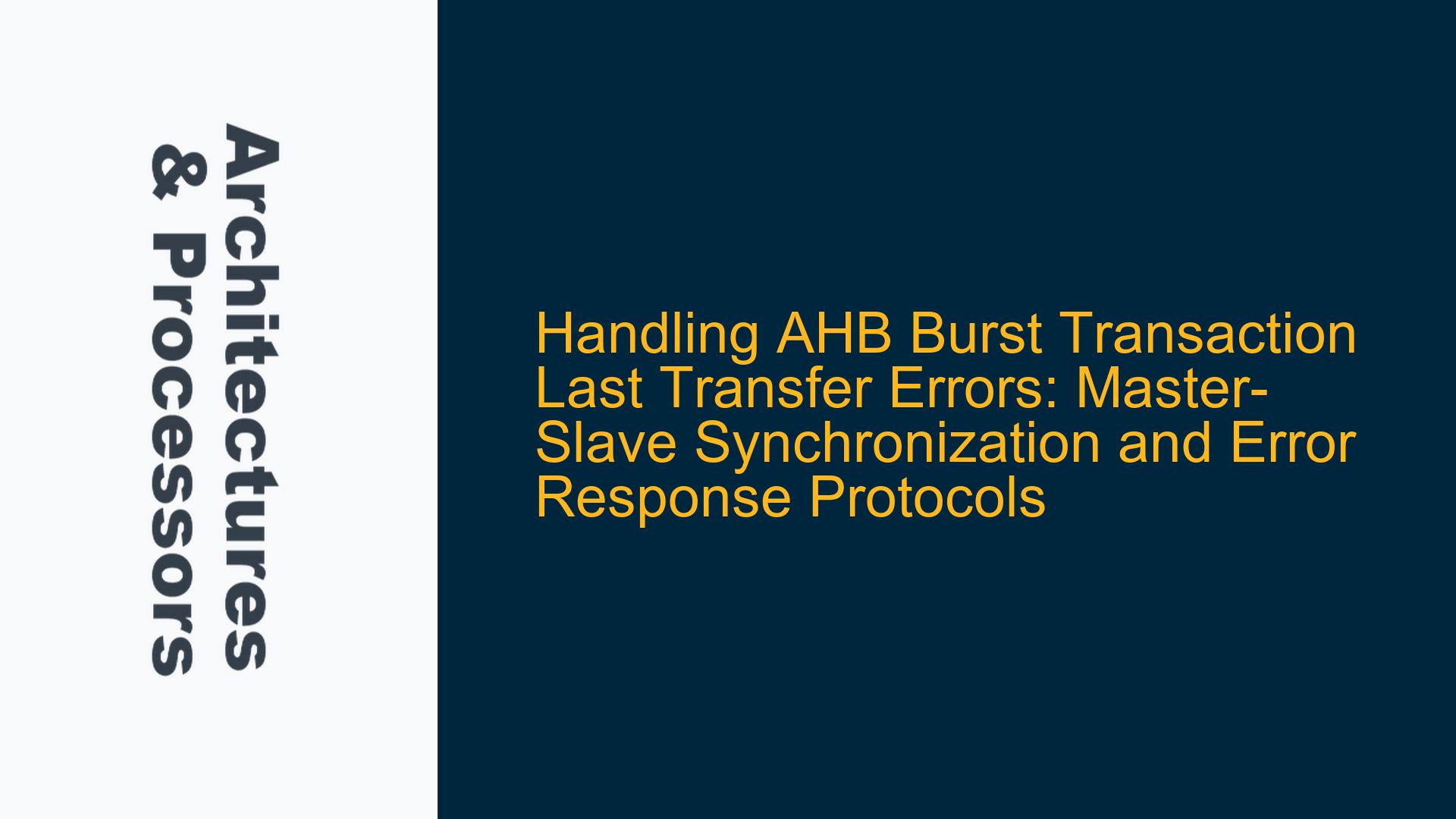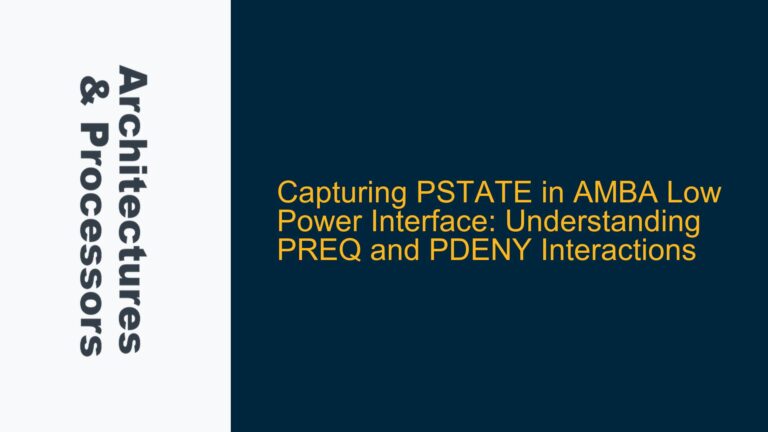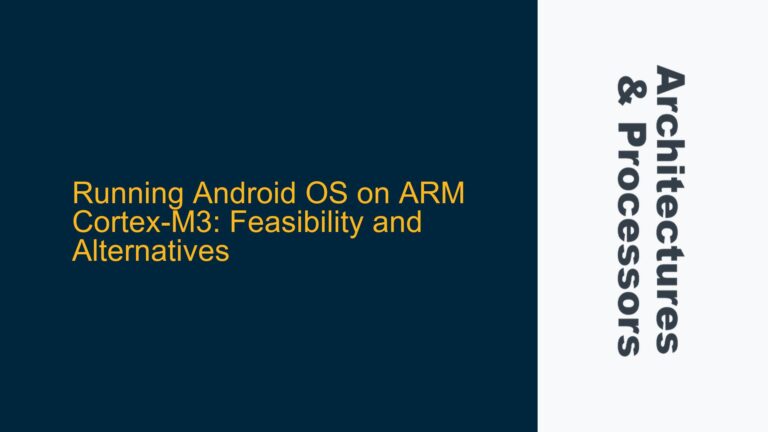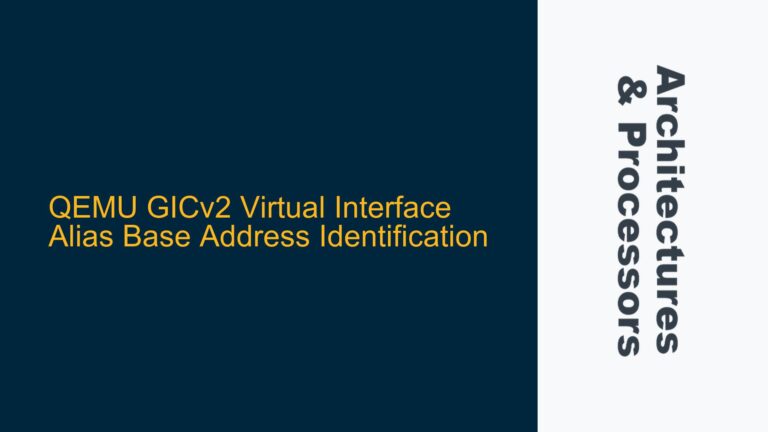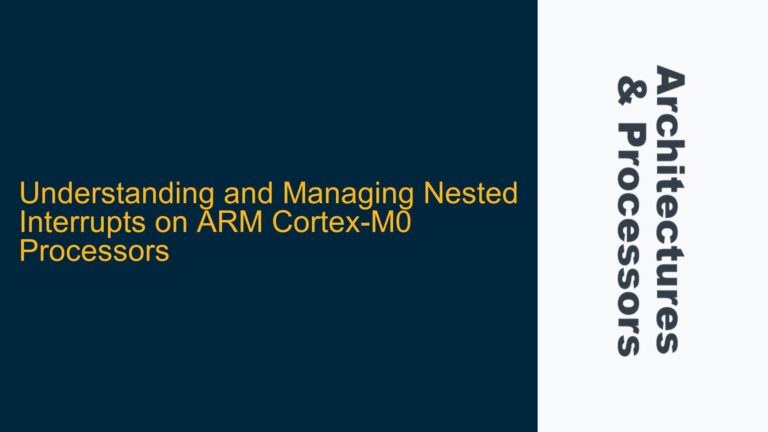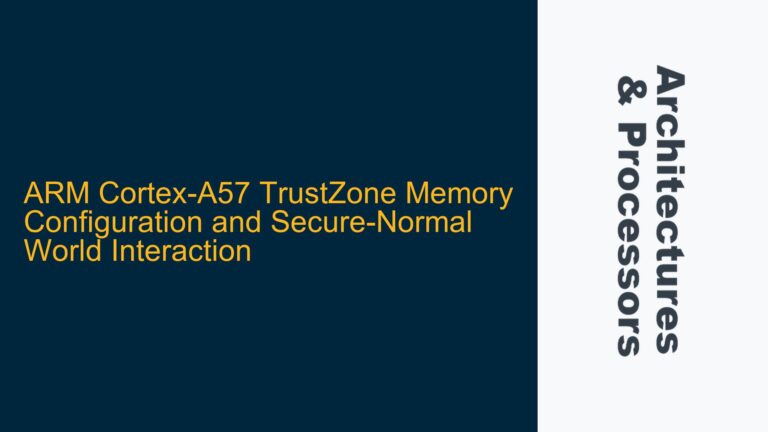AHB Burst Transaction Last Transfer Error Scenarios and Protocol Implications
In Advanced High-performance Bus (AHB) protocols, burst transactions are a fundamental mechanism for efficient data transfer between masters and slaves. However, handling errors during the last transfer of a burst transaction introduces complexities due to the pipelined nature of the AHB protocol. The core issue arises when the master transitions to the IDLE state (HTRANS = IDLE) after completing the address phase of the final transfer in a burst, while the slave responds with an error (HRESP = ERROR) during the corresponding data phase. This scenario requires a deep understanding of the AHB protocol’s two-phase operation (address phase and data phase) and the timing relationships between HTRANS, HREADY, and HRESP.
The address phase is initiated by the master, which drives the HTRANS signal to indicate the type of transfer (e.g., NONSEQ for the first transfer in a burst, SEQ for subsequent transfers, and IDLE when no transfer is requested). The data phase, on the other hand, is controlled by the slave, which uses HREADY and HRESP to signal the completion status of the transfer. In the case of a burst transaction, the address phase for the final transfer is followed by the data phase, which occurs one cycle later due to pipelining. This means that while the master may have already transitioned to the IDLE state, the slave is still processing the final transfer and may need to signal an error.
The key challenge lies in ensuring that the master correctly interprets the slave’s error response, even when the master has already moved to the IDLE state. This requires the master to monitor HRESP during the data phase of the final transfer, regardless of the current state of HTRANS. Additionally, the master must handle error responses appropriately, either by canceling subsequent transfers or treating the error as a wait state, depending on the system requirements.
Protocol-Compliant Error Handling in AHB Burst Transactions
The behavior of the master and slave during error conditions is governed by the AHB protocol specifications, including IHI0011A, IHI0033A, and IHI0033C. These documents define the timing and signaling requirements for error responses, as well as the responsibilities of the master and slave in handling such scenarios. Understanding these specifications is critical for implementing a protocol-compliant solution.
When the slave detects an error during the last transfer of a burst, it must assert HRESP = ERROR during the data phase, regardless of the master’s current HTRANS state. This is because the error response corresponds to the transfer that was initiated during the address phase, not the current state of the master. The master, in turn, must be designed to recognize and process this error response, even if it has already transitioned to the IDLE state.
The timing of the error response is also important. If the slave asserts HRESP = ERROR while HREADY = 0, the master must wait for the slave to complete the error response before proceeding. This typically involves a two-cycle error response, during which the master may choose to cancel subsequent transfers by setting HTRANS = IDLE or treat the error as a wait state. If the slave asserts HRESP = ERROR while HREADY = 1, the error response is completed in a single cycle, and the master must handle the error accordingly.
The protocol also allows for flexibility in how the master responds to errors. For example, the master may choose to retry the failed transfer, abort the burst transaction, or continue with the next transfer, depending on the system requirements. However, the master must ensure that it does not violate the protocol’s timing and signaling requirements, particularly when dealing with pipelined transfers and error responses.
Implementing Robust Error Handling in AHB Master and Slave Designs
To address the challenges of handling last transfer errors in AHB burst transactions, both the master and slave designs must be carefully implemented to ensure protocol compliance and robust error handling. This involves several key steps, including proper monitoring of HRESP during the data phase, correct timing of HTRANS transitions, and appropriate handling of error responses.
For the master design, the following considerations are critical:
- The master must monitor
HRESPduring the data phase of each transfer, including the final transfer in a burst, regardless of the current state ofHTRANS. - The master must be capable of handling two-cycle error responses, which occur when the slave asserts
HRESP = ERRORwhileHREADY = 0. This involves waiting for the slave to complete the error response before proceeding with subsequent transfers. - The master must implement logic to handle error responses appropriately, such as canceling subsequent transfers by setting
HTRANS = IDLEor treating the error as a wait state. - The master must ensure that it does not violate the protocol’s timing requirements, particularly when dealing with pipelined transfers and error responses.
For the slave design, the following considerations are critical:
- The slave must assert
HRESP = ERRORduring the data phase of the transfer that encountered the error, regardless of the master’s currentHTRANSstate. - The slave must ensure that the error response is properly synchronized with the data phase, particularly when dealing with pipelined transfers.
- The slave must handle error conditions consistently, ensuring that the error response is correctly interpreted by the master.
To illustrate the timing relationships and error handling mechanisms, the following table provides a detailed breakdown of the signals and their interactions during a burst transaction with an error response:
| Cycle | HTRANS (Master) |
HADDR (Master) |
HWDATA (Master) |
HRDATA (Slave) |
HREADY (Slave) |
HRESP (Slave) |
Description |
|---|---|---|---|---|---|---|---|
| 1 | NONSEQ |
Addr1 | Data1 | – | 1 | OKAY |
First transfer in burst, address phase. |
| 2 | SEQ |
Addr2 | Data2 | Data1 | 1 | OKAY |
Second transfer, address phase; first transfer completes data phase. |
| 3 | SEQ |
Addr3 | Data3 | Data2 | 1 | OKAY |
Third transfer, address phase; second transfer completes data phase. |
| 4 | IDLE |
– | – | Data3 | 0 | ERROR |
Final transfer, address phase; third transfer encounters error in data phase. |
| 5 | IDLE |
– | – | – | 1 | ERROR |
Error response completes; master remains in IDLE state. |
This table highlights the pipelined nature of AHB transactions and the timing of error responses. In cycle 4, the master transitions to the IDLE state after completing the address phase of the final transfer, while the slave asserts HRESP = ERROR during the corresponding data phase. The master must handle this error response appropriately, even though it has already moved to the IDLE state.
In conclusion, handling last transfer errors in AHB burst transactions requires a thorough understanding of the protocol’s two-phase operation, timing requirements, and error handling mechanisms. By implementing robust designs for both the master and slave, and ensuring protocol compliance, designers can effectively address the challenges associated with these scenarios.
